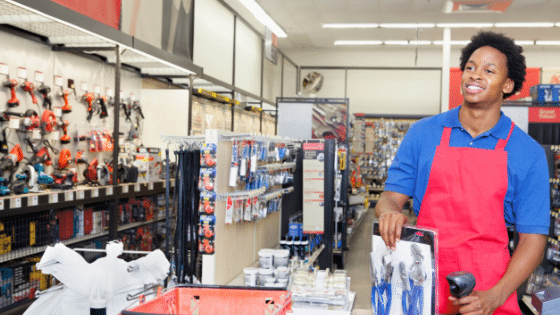
What is a Retail Point of Sale System and why your Store Needs One
A point of sale system is demonstrably the most important tool you can have when running a retail business.
In fact, retail stores that invest in a strong POS system are quick to see a huge return on investment.
A retail POS can help you save time and money by streamlining repetitive tasks, maintaining business records, and reducing human error. Even better, it can even help grow your retail business with useful data and marketing integrations.
Keep reading to find out more about how your retail business can benefit from a POS system.
What is a Retail POS?
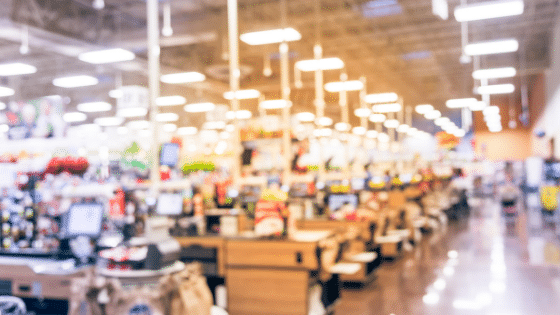
Traditionally POS stands for “point of sale” – which refers to the place where a customer transaction occurs. Or in simpler terms, the point at which a customer hands over money in exchange for a product that they’ve purchased.
For many retailers, this usually means the area surrounding the checkout line. For retailers who adopt cloud POS or mobile POS solutions, their whole store essentially becomes a point of sale.
What is a Retail POS System?
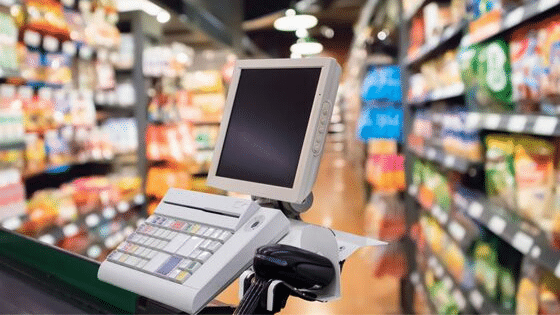
To better manage in-store checkout, retail POS systems were created. The original POS systems were a combination of hardware and software that retailers used to manage their sales operations. Because POS systems are the only source of all detailed store sales, they eventually expanded to include everything from tracking customer history and taxes reports to advanced marketing and inventory management.
Retail POS Software
Today, there are 2 main types of retail POS systems in the market: on-premise software and cloud-based subscriptions.
On-premise POS software: This type of software is installed on specific devices and usually does not rely on the Internet because the data is stored on the same devices. Because the database is stored “locally” in a specific server computer in your store, you can only access the data when you are in the store.
Cloud-based POS software: Cloud software stores data in an off-site cloud server (often hosted by a major cloud hosting service such as Google Cloud or Microsoft Azure) and is accessed via the Internet. You can compare it to writing a report on Google Docs. As long as you have an Internet connection, you can access your report from anywhere. While there may be some limitations without Internet access with cloud systems, there are major gains in remote accessibility, cost-savings and real-time data accuracy. Click here for more information on the benefits of cloud-based retail POS software
There is also a 3rd type of “hybrid” retail POS system which combines a hardwired local connection with access to data in the cloud. While this type of solution reduces the reliance on Internet, it is often a more complex system to maintain and more commonly used by larger operations. At the same time, because it is designed to allow for longer offline use, there is greater potential for issues with data quality during “synchronization” of online and offline data.
Expert Tip! It’s also important to note that offline usage and “data integrity” actually work against each other. While it is key for operations to have usable salesscreen functions (or alternative ways of processing sales) when the internet or network is down, the quality of the pooled data is lower and less accurate the more often the stations in a POS are “offline.” So if getting accurate, accessible business data from anywhere is a major priority, it’s important to consider a system which prioritizes real-time data accuracy with fast and reliable data sharing and considers offline usage for emergency scenarios only. Systems that prioritize offline capabilities over the data sharing functionality will be designed for infrequent synchronization. While this may not be a concern for certain types of businesses, the reality is that omnichannel retailers that need real-time stock quantity and even restaurants that take online orders need accurate POS data to make better operational decisions. After all, customers now expect real-time information when they intend to shop or order something. It’s another reason why smart POS is now able to automatically help merchants update correct store information or product stock levels in real-time.
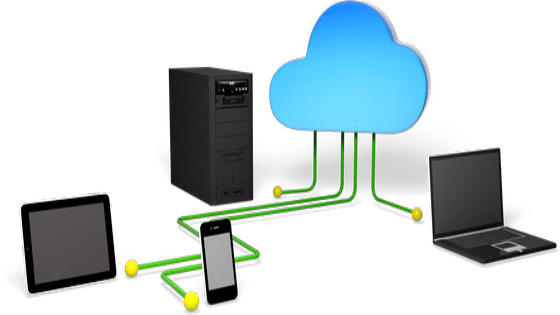
Retail POS Hardware
POS hardware includes all of the physical components of your POS system. It is usually comprised of the following items:
1. POS terminal: This is the hardware or device (computer, laptop, desktop etc.) that the POS software runs on.
Traditional, on-premise systems have limitations when it comes to hardware. This is because most on-premise solutions can only operate on certain devices and operating systems (such as Windows or Mac).
To use on-premise POS software, a license must be installed on each device that a merchant wishes to operate on. At the same time, licenses are often tied to the hardware they are installed on and can be difficult or costly to transfer to other devices.
For newer, cloud-based POS software, merchants can use any device with Internet connectivity to access their data – laptops, tablets, desktops and even mobile phones. Cloud POS software does not require merchants to pay per device, rather merchants often pay per active station (or users logged in at the same time). Transferable access offers multi-channel merchants a lot more flexibility when managing store operations.
2. Cash Drawer: A cash drawer is an important yet simple part of a retail POS system. This piece of hardware provides both security and organization to retailers. It is where cash, coins, checks and credit card receipts are stored.
The receipt printer will send signals to the cash drawer, prompting it to open when necessary.
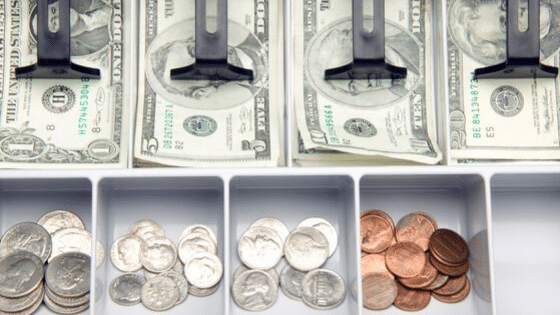
3. Barcode Scanner: Barcode scanners are an important part of most retail stores. Compared to restaurants, retailers carry a lot more inventory and need to use barcode scanners to make checkout an easier and faster process for both store employees and shoppers. Scanners use lasers to read barcode numbers unique to each SKU and enter these numbers immediately in the POS software.
While most retail POS systems should be designed specifically for barcode scanners, it is important for there to be other search methods should barcode tags get damaged or lost. Without scanners, cashiers should be able to quickly search by product codes or keyword for each item in the store.
Expert Tip! Unless a retail store has a very low number of inventory items (e.g. coffee shop), the default salesscreen mode should be designed for barcode scanners. The picture gallery touchscreen mode commonly found in tablet-based POS was traditionally designed for restaurants where the number of inventory items is very low and is generally not efficient in retail stores with more than 500 unique SKUs. While some POS providers will serve both restaurants and retailers, if the default salesscreen is designed for touchscreen picture gallery, most likely the company that developed the original software started with a restaurant POS and later retrofit it for retail.
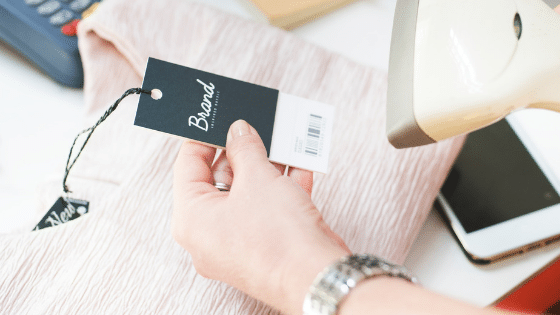
4. Receipt Printer: Once a customer pays for the items that they have purchased, cashiers will usually hand them a receipt to confirm payment. While email receipts are increasingly popular, the majority of receipts are still printed based on the data received from the POS software.
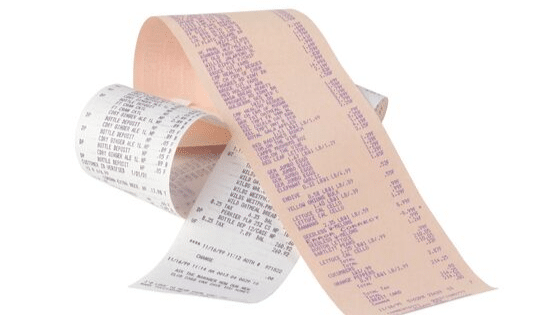
5. Credit Card Terminal: This is the hardware that store staff use to accept debit and credit card payments. Increasingly, shoppers prefer and make the majority of their purchases with credit and debit cards.
There are three ways that credit card terminals can accept credit or debit payments:
1) Using chip & PIN cards: Where shoppers insert chip & PIN cards to make a purchase. This type of payment is EMV-compliant and the most secure of the 3 types.
2) Swiping card magstripes: Where shoppers swipe their cards in order to make a payment. This type of payment is not EMV compliant and opens the merchant up to chargebacks on all payments processed.
3) Near-field-communication (NFC): Where shoppers use their devices (Apple or Google Pay) or simply tap their cards to pay. This type of payment is the fastest of the 3. While tap is not as risky as magstripes (it is generally only allowed for individual payments of up to $100), in a busy store, this can be costly as the merchant is still fully liable for any chargebacks.
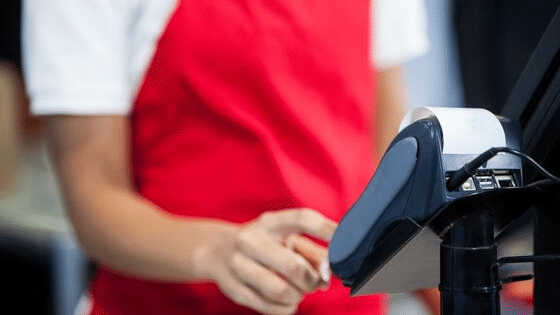
3 Reasons Why Your Retail Store Needs a POS System
1) Faster Checkout
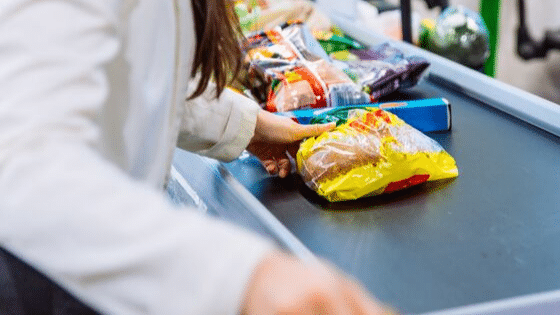
Slower checkout speed often leads to abandonment. In fact, long lines and poor checkout experience are major contributors to low shopper dissatisfaction.
Adopting a POS software that is designed for checkout speed will help speed up store operations and improve shopper satisfaction. This is especially important for busy multi-lane stores as they often deal with long line-ups.
Faster checkout is also key to increasing revenue during high season or rush periods. The longer your customers wait in line, the slower your turnover and lower your sales.
Here are some checkout features to look out for when choosing a retail POS software designed for fast checkout:
Easy navigation: Look for a software that is designed for checkout speed and minimum clicks. You shouldn’t have to leave your salescreen in order to complete a transaction.
Fast scanning speed: Retail POS software should be designed for quick barcode scanning with easy recall of your last search. Make sure that the system you’re looking at is able to handle multiple barcodes per SKU as every retail product commonly has an internal code, a shortcode, a vendor code, a manufacturer code and possibly several carton codes.
Advanced inventory search: Besides barcode scanning speed, a retail POS software designed to handle high volume inventory or a large number of transactions quickly needs to be able to have smart search functions including keyword search by description, barcode or tag should labels not be scannable, etc.
If you want more information about adopting a line busting retail POS software that is designed for checkout speed, click here.
2) Increased Mobility

Retail POS systems – cloud POS software in particular, provide retailers with more flexibility and mobility. As data is stored in the cloud, store owners can access their business information around the clock from anywhere – even if they are not physically in the store. They can view inventory levels, tax reports and sales data right from the comfort of home or even on vacation. Well-designed cloud POS software can also function on any device – from tablets, laptops to smartphones.
3) The Ability to Use the POS Data for Retail Marketing

POS data is critical to the success of any business. This is because data provides retailers with the tools to effectively manage inventory, sales, and finances.
Besides standard sales and inventory reports, modern cloud-based retail POS systems help store owners sell more using their own POS data. Because cloud POS are particularly good at integrating with other cloud solutions, real-time store data can be shared other solutions such as e-commerce platforms, shipping services or listings such as Google My Business, which help improve SEO and drive more local foot traffic to stores.
We will be posting more POS tips in the upcoming weeks.
Subscribe to our blog to stay updated on the latest retail marketing trends, POS tips, and industry updates.
#pointofsale #posdefination #pointofsaledefination #benefitsofpos #retail #retailstore #builtforretail #cloudpos #retailpos

